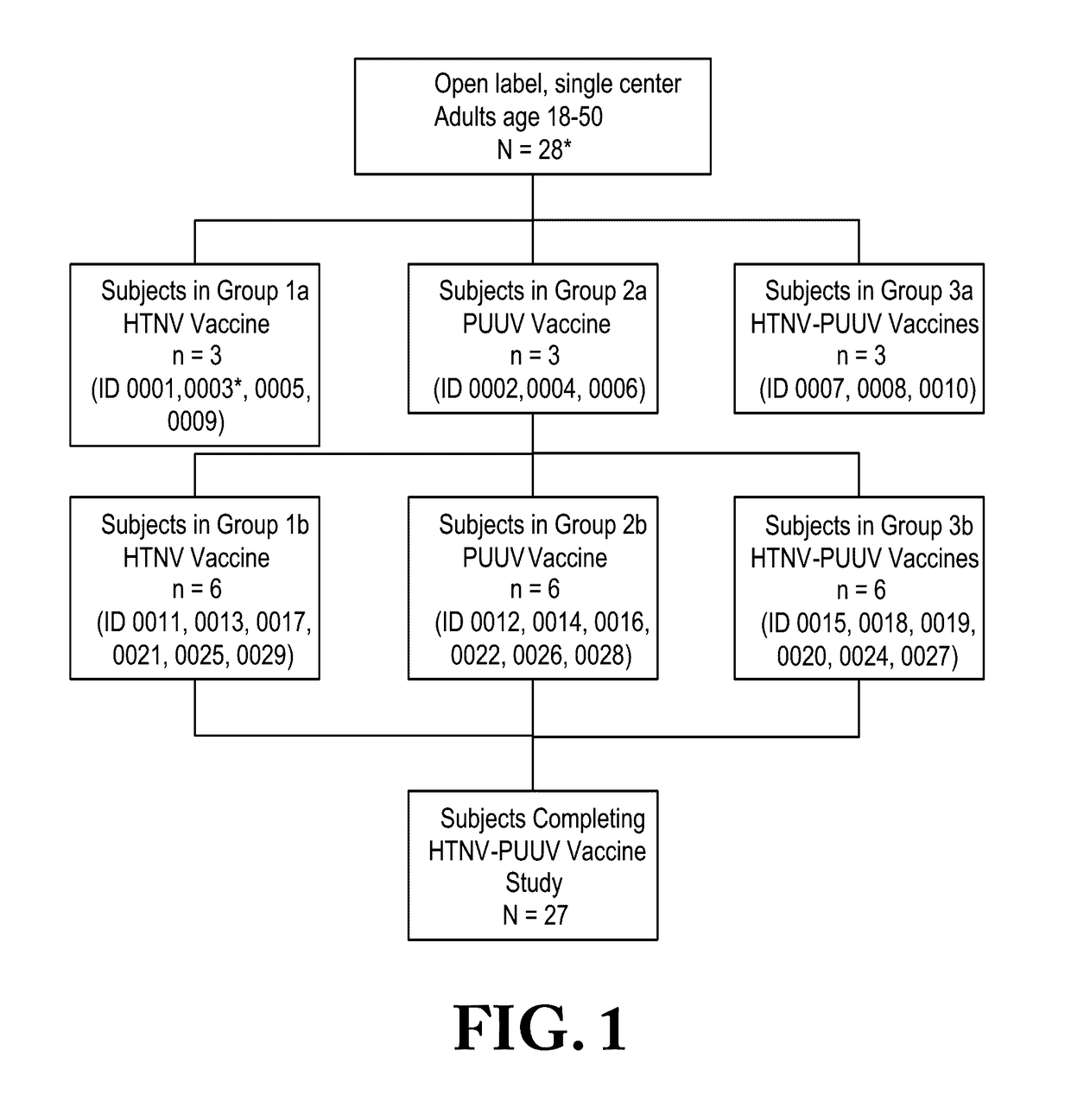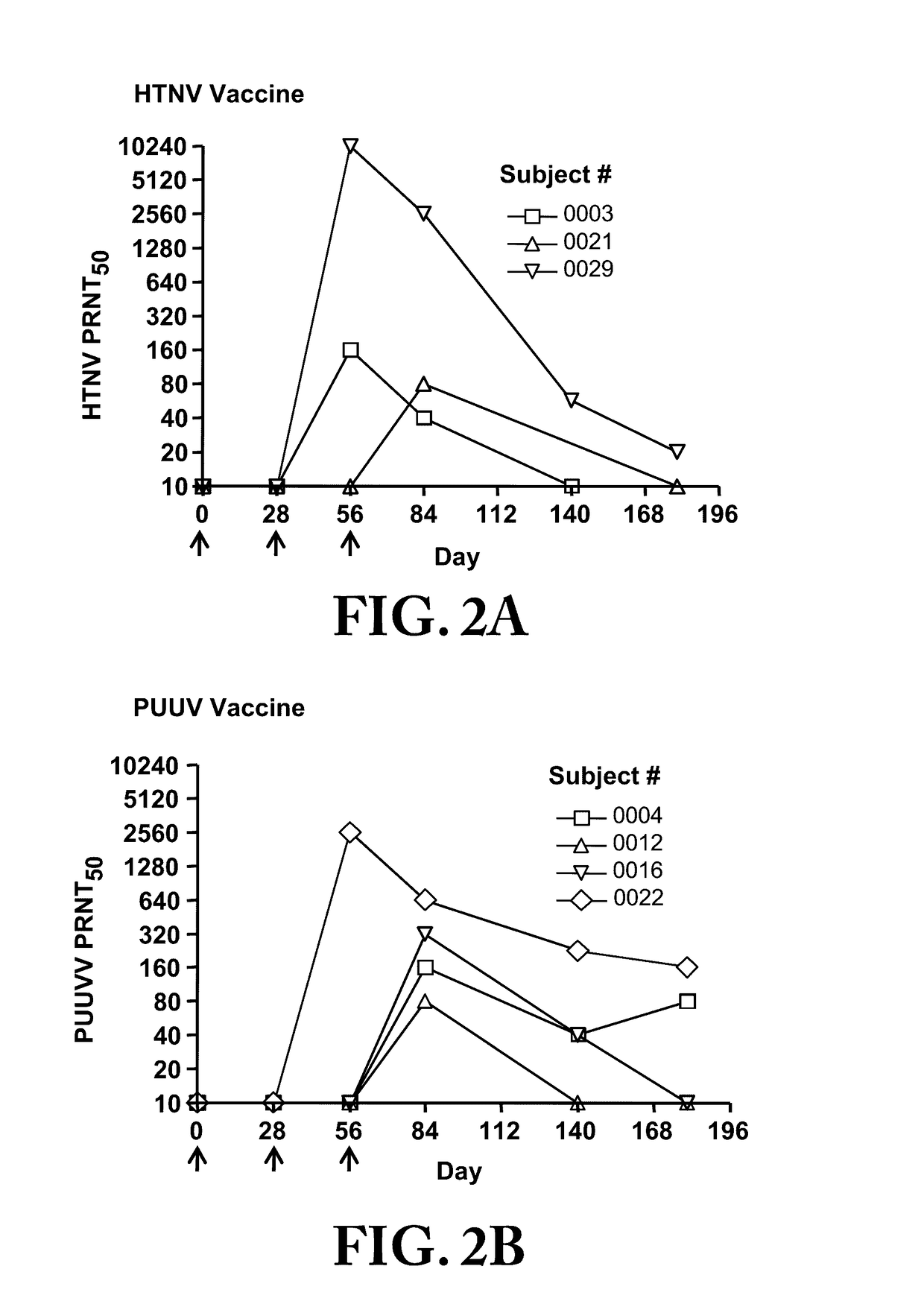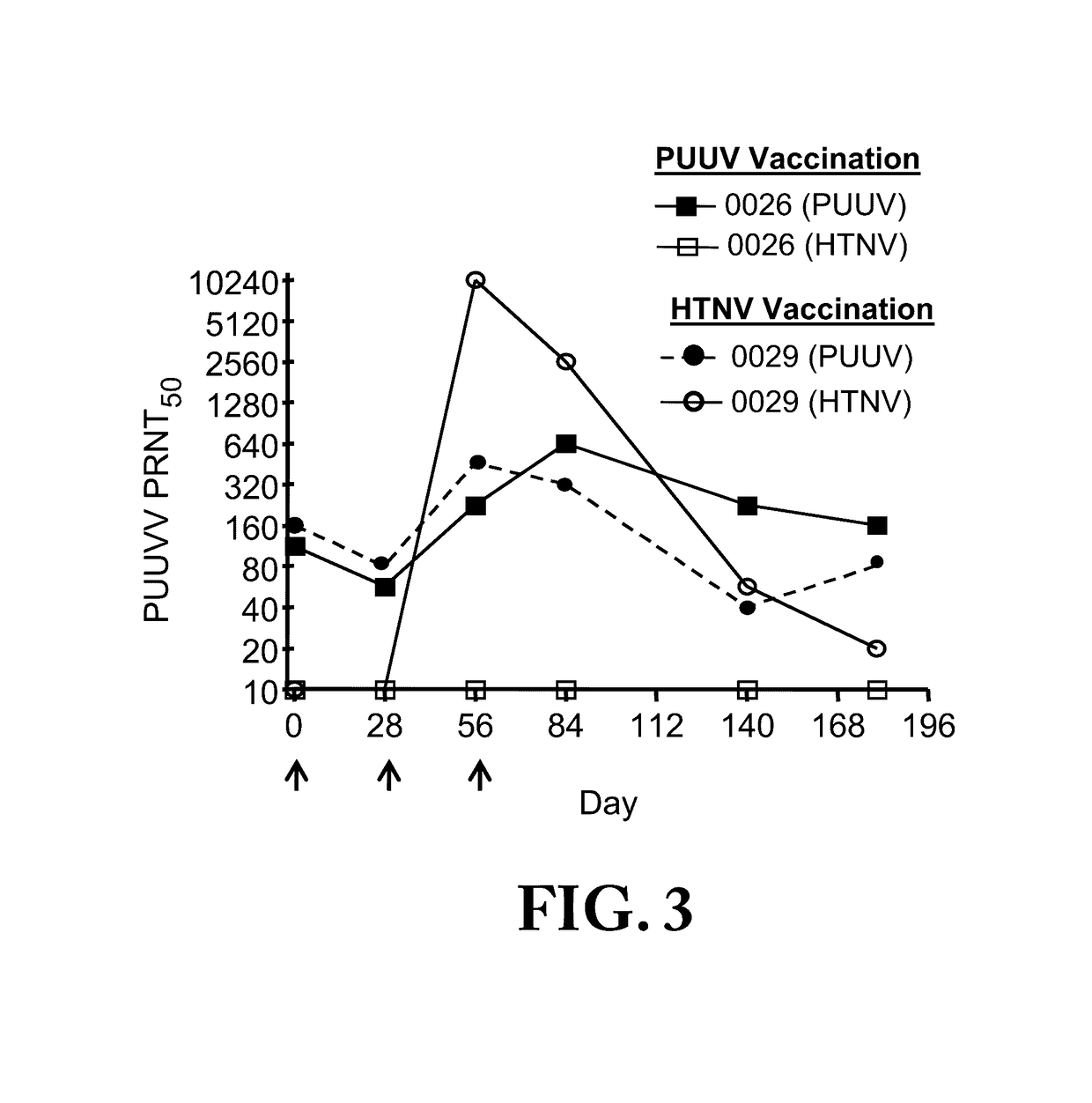Gene Optimized Hantaan Virus M Segment DNA Vaccine For Hemorrhagic Fever With Renal Syndrome
a technology of hantaan virus and hantaan virus, which is applied in the field of hantaan virus m segment dna vaccine for hemorrhagic fever with renal syndrome, can solve the problems of sudden fever of hfrs, low blood pressure, and death, and achieves the effects of reducing immunogenicity or protective effect, maximizing mammalian codon availability, and improving vaccine components
- Summary
- Abstract
- Description
- Claims
- Application Information
AI Technical Summary
Benefits of technology
Problems solved by technology
Method used
Image
Examples
example 1
mized HTNV Study, in Which HTNV and PUUV Vaccines are Delivered as Separate Administrations)
[0065]Candidate DNA vaccines for hemorrhagic fever with renal syndrome expressing the envelope glycoprotein genes of Hantaan (HTNV) or Puumala (PUUV) viruses were evaluated in an open-label, single-center Phase 1 study consisting of three vaccination groups of nine volunteers. The volunteers were vaccinated by particle-mediated epidermal delivery (PMED) three times at four-week intervals with the HTNV DNA vaccine, the PUUV DNA vaccine or both vaccines. At each dosing, the volunteers received 8 μg DNA / 4 mg gold. There were no study-related serious adverse events, and all injection site pain was graded as mild. The most commonly reported systemic adverse events were fatigue, headache, malaise, myalgia, and lymphadenopathy. Blood samples were collected on days 0, 28, 56, 84, 140, and 180, and assayed for the presence of neutralizing antibodies. In the single vaccine groups, neutralizing antibodi...
example 2
mized HTNV Study, in Which the HTNV and PUUV DNA Vaccines are Given as a Mixture, Resulting in Interference)
[0067]In this study, vaccines were delivered using Ichor medical System's IM-EP device. The study included 3 randomized groups of 9 subjects, each of whom received three vaccinations at days 0, 28, and 56 with 2 mg of DNA / 1 mL of the non-optimized HTNV vaccine, the optimized PUUV vaccine, or a mixture of both vaccines. Three vaccinations were given four weeks apart. No serious adverse events related to the vaccine were observed. Analysis of blinded serum samples indicated that neutralizing antibodies were elicited against both HTNV and PUUV, but that in volunteers receiving both vaccines, interference was observed, with only three subjects developing neutralizing antibodies to HTNV (FIG. 12C) as compared to seven developing neutralizing antibodies to PUUV (FIG. 12D).
example 3
mized HTNV DNA Preclinical Safety Study in Rabbits Showing that Mixed HTNV and PUUV DNA Vaccines Result in Reduced Response to HTNV in Rabbits, i.e., Interference)
[0068]In FIGS. 11A and 11B, results from a GLP safety study of non-optimized HTNV DNA vaccine and optimized PUUV DNA are shown. The vaccine delivered to rabbits by electroporation was performed. Rabbits were vaccinated three times by IM-EP with individual or mixed vaccines (1 mg each) and neutralizing antibodies were measured. Control rabbits were vaccinated with phosphate buffered saline (PBS) using IM-EP for delivery. The data show that equivalent neutralizing antibody titers to PUUV were elicited when the PUUV vaccine, pWRG / PUUM(s2), is given alone or mixed with the non-optimized HTNV DNA vaccine, pWRG / HTNM(x) (FIG. 11A); however, greatly reduced titers to HTNV were observed with the mixed vaccines as compared to those obtained with the HTNV DNA vaccine alone (FIG. 1B).
PUM
| Property | Measurement | Unit |
|---|---|---|
| volume | aaaaa | aaaaa |
| volume | aaaaa | aaaaa |
| blood pressure | aaaaa | aaaaa |
Abstract
Description
Claims
Application Information
 Login to View More
Login to View More - R&D
- Intellectual Property
- Life Sciences
- Materials
- Tech Scout
- Unparalleled Data Quality
- Higher Quality Content
- 60% Fewer Hallucinations
Browse by: Latest US Patents, China's latest patents, Technical Efficacy Thesaurus, Application Domain, Technology Topic, Popular Technical Reports.
© 2025 PatSnap. All rights reserved.Legal|Privacy policy|Modern Slavery Act Transparency Statement|Sitemap|About US| Contact US: help@patsnap.com



